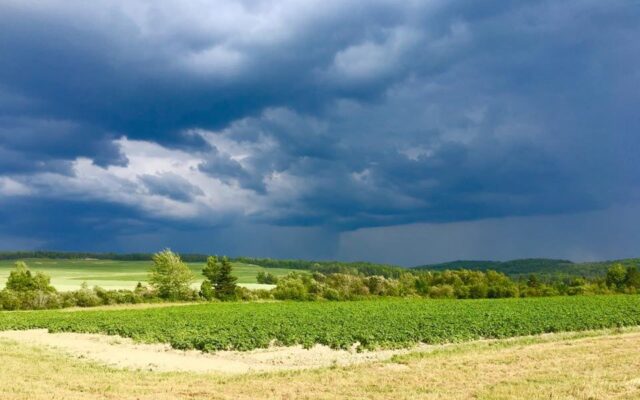
Watch for these signs that your well may be running dry during Maine’s drought
By Julia Bayly, Bangor Daily News Staff
Private wells in Maine are at risk of going dry thanks to ongoing drought conditions this summer. This comes at a time when farmers, homesteaders and gardeners need all the water they can get for their crops and livestock.
Thirty-four private well owners have already reported running out of water, according to the Maine Emergency Management Agency’s dry well survey. The majority are in the southwestern part of the state where this year’s drought has hit particularly hard.
There is not much that can be done once a well does go dry, other than wait for it to refill, usually in the fall when there is a better chance for steady precipitation. It’s vital to conserve water before you reach that point and pay attention to signals that a well may be running dry.
The most reliable way to check your well is to take off the well’s cover and look down to observe the water level. But that’s not always the most practical way to check if your well is in a location that is hard to get to or so deep you can’t see all the way down.
If that’s the case, here are four signs you can watch for that your well is at risk of running dry.
Sputtering faucets
In some cases, your household plumbing may be trying to tell you something. Faucets that start to sputter, or sputter longer, when turned on often means there is air in your pipes. One way that happens is if your well water level has fallen below its pump, so instead of pulling in water, it’s sucking in air.
Noisy pumps
That same lack of water in your well can make your pump work longer and hard as it tries to pull in any available water. When the water level drops, the pump is going to do its best to maintain a steady water pressure. If you hear your pump running non stop, or constantly turning on and off, that could signal low water in the well. What water it does manage to draw in is going to come out of your taps in more of a trickle, than a solid stream.
Dirty water
The water that does come out should be clear. If it starts looking sandy or muddy with a strange taste or odor that’s another sign your well can be getting low. When the level drops too far, the action of the pump kicks up the sediment at the bottom of the well and pulls it in right to your faucets.
Neighborhood problems
Talk to your neighbors to see if they are having any problems. It’s not uncommon for multiple homes to be drawing water from the same aquifer, and if one home goes dry, others could follow.
If you’re concerned your well is running low, take these measures to conserve water:
— Take shorter and less frequent showers.
— If you don’t have a low volume toilet, put a plastic bottle filled with water or brick in the toilet tank to reduce the amount of water used per flush.
— Run your dishwasher only when it’s full.
— Look for and repair any leaks in pipes.
— Reduce or completely eliminate water used for recreation, such as filling pools or running the sprinkler for children to run through.
— Have water delivered from a reputable business for non-potable use.
Conserving can help prioritize your water use. Humans and animals depend on water to survive, so you should put those needs at the top of the list.
Irrigating food crops is also important for livelihoods and home consumption. If possible, try to draw water from a nearby stream or another alternative source to prevent drying out your well. Last week 300 cows on a farm in Auburn had water brought in by the Auburn Fire Department after the farm’s well ran dry.
The Maine Department of Health and Human Services has a list of resources and businesses that may be able to offer assistance if a well does run dry.